“By the year 2024, 79% of businesses were operating with AI — in 2023, we were a little over 50%.”- Stanford
Yes, you read that right. That stat (provided by Stanford) isn’t just impressive — it’s proof that AI is now officially mainstream.
No matter who you are — whether you’re a business owner, a developer, a content creator, or just a person who’s had the pleasure of seeing ChatGPT evolve, 2025 is going to leave you speechless. We mean AI that can see, hear, speak, organize, and even create — and do all of these better than humans.
So if you’re asking yourself what the next artificial-intelligence breakthrough will be — and how it’s going to influence the way we live, work, and think — you’ve come to the right spot.
Let’s explore the leading AI trends to look out for in 2025.
Top Artificial Intelligence Trends 2025
Edge AI is transforming how data is processed by enabling real-time insights directly on local devices without relying on cloud servers. In 2025, it’s becoming crucial for industries that demand speed, security, and autonomy. Here’s why it’s gaining momentum:
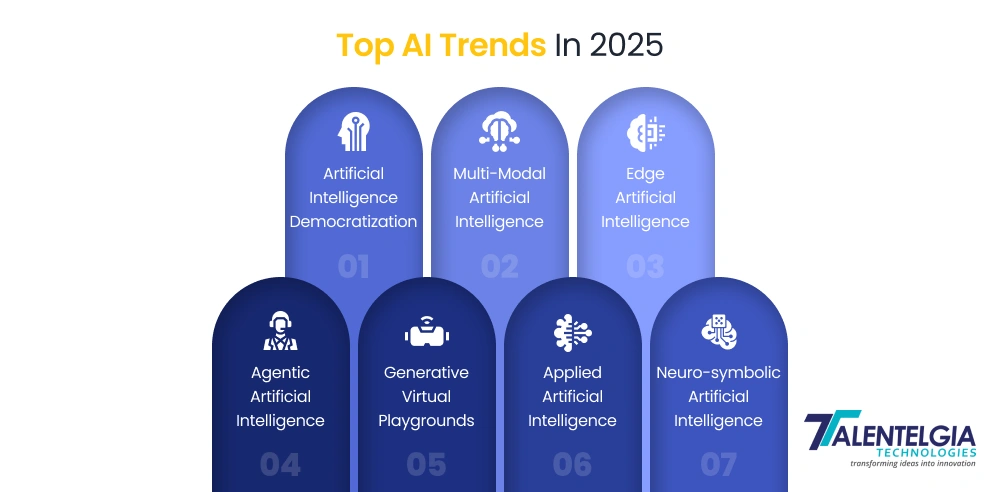
1. Democratized AI
Democratized AI means that AI is no longer the province of data scientists and machine learning engineers; it is now a mainstream tool that just about anyone can use. No-code platforms, user-friendly interfaces, and cloud-based solutions have made AI accessible to professionals in marketing, HR, operations, finance, and other areas.
This dynamic is breaking away from the historic barriers to AI adoption — requirements for highly-skilled coders, heavy infrastructure investment, and data science expertise. Instead, it enables teams across all areas of the business to solve problems, find insights, and drive innovation on their own. According to Gartner, democratized AI is shaping up to be “one of the most disruptive trends this decade,” turning AI into a strategic asset at scale throughout the organization.
Why Is Democratized AI Important?
AI democratization has less to do with access and more to do with scale that enables innovation. In an environment where AI is now a tool for the masses, organizations enjoy:
- Accelerated ideation between departments
- Real-time insights, smarter decision making
- Empowerment of employees and employee autonomy.
- Rapid innovation is no longer slowed down by IT
But this fresh rush also comes with new complications. Ethical use, data privacy, algorithmic bias, and misuse of AI are real concerns. Proper governance, transparent AI development practices, and upskilling are necessary for organizations to prevent such side effects.
Real World Use Cases of Democratized AI
Those that are moving toward democratized AI are already experiencing the transformative effects:
- AI tools such as Jasper and Copy.ai aim to help marketing teams create and automate content in real time, at scale.
- Now, HR teams optimise hiring with AI-enabled video interviews and sentiment analysis using platforms like HireVue.
- Customer support representatives use chatbots like Zendesk AI and Freshchat to ensure 24/7 service and improve customer satisfaction levels.
- Miro and Mural (with AI integration) are being used by product teams to brainstorm, map ideas, and collaborate more productively.
Pros of Democratized AI
Wider accessibility: AI is not only available for non-technical users today, but also for a broader audience who can automate tasks, analyze, and even make decisions.
Faster innovation: Plenty of brains making and experimenting with AI means a faster rate of innovation across all industries.
Cost-effectiveness: No-code solutions, open-source platforms, and cloud offerings are lowering the usual economic hurdles to AI creation.
Cross-functional enablement: Marketing, HR, finance, and other departments can deploy AI independently, with less dependence on data scientists and IT.
Cons Of Democratised AI
Lack of knowledge on technical grounds: Such AI tools can be misused by non-experts or misinterpreted, resulting in bad decisions or biased outcomes.
Ethical and privacy concerns: As more people build and deploy models, there’s more that can go wrong when it comes to violating data privacy or training unethical AI systems.
Model governance challenges: Without adequate governance in place, companies can’t track, validate, or secure AI models created by non-technical teams.
Overreliance on automation: Overreliance on AI for tasks that lack human oversight can result in a diminished capacity for critical thinking and creativity.
2. Multimodal AI
It simply means artificial intelligence systems can understand and respond to multiple kinds of digital inputs — text, images, audio, and video — rather than just one type of data.
Multimodal AI is not just for text or visuals; traditional models can only process one form of data. This implies that using multiple types of data ushers in better and more accurate results that are more context-aware. This is similar to the human way of comprehending the world — by taking in what they see, what they hear, and what they read simultaneously.
Why Multimodal AI Matters?
Multimodal AI is not just a fancy word, it’s revolutionizing the future of UX with AI and automation in virtually all industries. Here’s why it’s powerful:
- Contextual Comprehension: It understands information in a more comprehensive way. For instance, it can watch a video containing both audio and visual cues to better understand a scenario.
- Enhanced Accuracy: If one input (e.g., audio) is noisy or unclear, the AI can refer to the other inputs (e.g, text or image) for reliability.
- Enhanced interactions: Multimodal systems make it more natural to communicate. Imagine a virtual assistant that can simultaneously comprehend voice commands and visual information.
- Broader Access: These models serve a greater variety of user scenarios, promoting accessibility for users with vision or hearing impairments, for instance.
Real World Examples of Multimodal AI
ChatGPT-4o from OpenAI: The most recent version of ChatGPT doesn’t just read text—it can understand and generate responses that take images, voice, and even video into account, supporting dynamic conversations across modalities.
DALL·E: First designed to be a visual counterpart to natural language processing language models, DALL·E is capable of creating images from written text while learning together as vision and language.
Bird Identification Apps: Apps like Merlin Bird ID rely on multimodal AI to identify a bird not just from a photo, but from a unique song, combining sound and sight recognition.
Online Shopping Assistants: Online ecommerce assistants are now able to process an image of a customer for clothing size recommendation and then guide the user using voice or text, seamlessly and personally.
Also Read: Cloud Computing Role in Edge AI
Pros Of Multimodal AI
Enhanced Accuracy and Context Awareness: Leveraging multiple data types together (e.g., text + image + audio), multimodal AI decreases uncertainty, resulting in more accurate and context-aware outputs.
More Natural User Experiences: Through voice, images, gestures, and text, people can instantly connect, interact, and find information, providing AI interfaces that are more intuitive and human-like.
Noisy or missing data resilience: When the information from one modality is unclear (e.g., audio is noisy), AI can rely on other inputs (e.g., visual data) to ensure high quality, which leads to better accuracy.
Enhanced Accessibility: Multimodal system accommodates a variety of user needs, for instance, by means of combining speech recognition with a visual interface to assist users with disabilities or language problems.
Cons Of Multimodal AI
Higher Computational Costs: The infrastructure costs for processing more than one type of data at the same time can be rather steep.
Complex Model Training: It is technically difficult and time-consuming to build and train models that can combine and understand diverse modalities.
Data Privacy Risks: Combining data from different sources — such as images, voice, and text — can raise serious questions around privacy, consent, and the potential for abuse of personal data.
Inconsistent Data Quality: Each modality can have its own format, resolution, or noise. Even providing high-quality, aligned input across all types can be a costly and labor-intensive process.
3. Edge AI
Edge Artificial Intelligence (Edge AI) is placing AI algorithms on edge devices (IoT sensors, smart cameras, wearables, mobile devices) so that data can be processed in real time without having to consistently access cloud servers. This centrality-free design accelerates edge computing with machine learning, reduces latency, which allows ultra-low-latency decisions to be made at the data origination site.
Whether in self-driving cars, smart home systems, factory automation, or remote patient monitoring, Edge AI enables this technology to respond instantaneously, online or offline.
According to a recent report by Fortune Business Insights, the global Edge AI market is poised for explosive growth, from USD 27.01 billion in 2024 to an estimated USD 269.82 billion by 2032, growing at a CAGR of 33.3% during the forecast period. This surge highlights the rising demand for fast, secure, and efficient AI deployment across industries.
Why Edge AI Is Important Now?
As with most other industries, companies in industrial verticals are seeking to automate, streamline processes, and improve safety and productivity, and as such, Edge AI has become a powerful solution. But why now?
In the past, the irregular and unorganized nature of the real world posed a challenge for traditional computer programs operating under rigid instruction sets to mimic human decisions. That’s where Edge AI comes in, allowing machines and devices to work with a degree of cognitive intelligence, quite similar to human thinking.
Edge AI enables intelligent apps to learn, adapt, and decide in real-time, even in dynamic environments. This transformation is led by three major technological developments:
Maturation of Neural Networks: At last, AI infrastructure has developed to the point of being able to handle generic machine learning.” Companies and teams can now reliably device-side train and deploy neural network models, making AI in the real world more scalable and enabling applications to run more efficiently.
Compute Infrastructure Developments: Running AI models on edge devices is a task that demands strong parallel processing capacities. Advancements in high-performance GPUs and edge-optimized chips have made it possible to run neural networks directly on local devices, limiting dependence on cloud-based systems.
The IoT and 5G Connection Boom: Due to billions of connected things (smart cameras, industrial sensors, autonomous drones, wearables, and others), organizations now have enormous stores of data at the edge. Paired with 5G, these IoT networks have gotten faster, more reliable, and more secure at transmitting data, supercharging the real-time capabilities of Edge AI.
Real World Examples Of Edge AI
Autonomous Vehicles (Tesla, Waymo, BMW): Edge AI provides the ability for real-time decision-making of self-driving vehicles. Cameras, LIDAR, and radar sensors continuously provide data to onboard AI systems, which use it to analyze road conditions, identify objects, and even make split-second driving decisions without having to tap the cloud.
Smart Security Cameras (Hikvision, Arlo, Ring): Today’s surveillance systems implement Edge AI to have the camera directly detect motion, recognize faces, or distinguish between people, animals, and objects. It enables instant alerts and minimizes potential unnecessary video uploads to the cloud.
Wearables (Apple Watch, Fitbit Whoop): Wearables leverage on-device AI for real-time heart rate and sleep monitoring, as well as real-time Body Composition, and provide personalized insights without always requiring a connection to the cloud.
Factory Automation (Bosch, Siemens, GE): Manufacturers apply edge AI to smart sensors and robotic arms to forecast equipment failure, optimize production lines, and keep workers safe, often without transmitting information off-site. This improves the uptime and efficiency of the equipment.
Pros Of Edge AI
Reduced Bandwidth Usage: Edge AI reduces the requirement to send large amounts of data about potential issues to the cloud, which helps reduce bandwidth usage and can make systems more efficient.
High Availability: Systems are able to operate without internet and function in poor-network and no-network conditions without interruption.
Lower Operational Costs: Edge AI cuts down on cloud processing costs and unburdens centralized servers by offloading tasks. This reduces infrastructure and maintenance costs in the long run.
Scalability: Because edge functionality is built into OEM hardware and IoT, you have the potential to scale without overwhelming the cloud or central systems.
Cons Of Edge AI
Deployment Complexity: Moving and updating AI models on thousands of devices can be technically complex and requires strong edge management systems.
Security Risks at the Edge: Local processing also increases privacy, but single solutions are sensitive to physical intervention and cyberattacks, especially if they are not perfectly secured.
Data Fragmentation: If processing is bottled up across multiple devices, data sets can become incoherent, while there is no aggregation of insights without effective synchronization with the cloud.
Maintenance Overhead: Edge AI systems may need more often maintenance or monitoring, in the case that such systems are placed in areas that are more remote or difficult to access.
4. Agentic AI
Agentic AI is a new category of artificial intelligence that can work and make decisions on its own, learn in real time from experiences, and solve complex problems that span multiple steps because it has a contextual map of the business and its goals. Such systems are composed of intelligent AI agents, frequently driven by large language models (LLMs), that work together to make dynamic decisions like a human team.
Unlike traditional rule-based systems or even the simplest generative AI models, which obviate the need for human prompting and supervision, Agentic AI can think, plan, and act on its own. It understands and decodes information, knows its objectives and opponents, can think or plan accordingly, and make actions, all with very little direct tutoring.
Why Agentic AI Matters?
In today’s enterprises, problems are hardly ever linear. Workplaces change rapidly, customer demand evolves, and data streams in from a myriad of sources. Classic AI solutions, whether they are agentic or less agentic, are struggling to cope because they are not situationally aware, and so they follow narrow lines of logic.
Though generative AI trended for content creation and life hacks to keep productivity up, it’s not enough to drive a complete business solution. It can write or return them to the input of your nearest AI orator afterwards, but it cannot be tasked to objectively act, to determine an outcome, or to alter policy based on the outcome.
Agentic AI bridges this gap and allows systems to achieve:
- Understand complex goals
- Then you can divide them into simple tasks.
- Make informed decisions
- Modify workflows according to your feedback instantly
- Influence Results Across the Organization
Real-Life Use Cases of Agentic AI
Agentic AI is one of the emerging forces in real-world enterprise transformation, as organizations continue to shift towards intelligent automation. Unlike classic AI solutions that adhere to static commands, agentic AI business solutions are capable of independent thought, making decisions, completing workflows, analyzing data, and reacting in the moment.
Join us as we dive deep into the applications of Agentic AI in industries such as customer service, healthcare, logistics, and financial services.
1. Customer Service: Scripted Bots to Smart Agents: Traditional chatbots fail to meet the mark in a more free-flowing conversation that has transcended beyond basic FAQs. They use predetermined scripts, and often must be turned over to human agents to resolve.
Agentic AI brings customer support to the next level. These intelligent systems may:
- Read between the lines of customer intent and sentiment,
- Answer in real-time in a personalized way,
- Resolve issues proactively without human input.
By taking over these repetitive support tasks, like tracking down user details or transaction histories, Agentic AI is able to raise productivity for customer service teams and allow them to better execute on making more complex queries, faster, with better results, at less cost for your business, and a better customer experience.
Example: A tolling company deploys agentic AI to automatically process high volumes of support tickets during peak times, emotionally recognizing sentiment in the messages and retriaging major issues automatically.
2. Healthcare: Better, More Effective Patient Care: In medicine, AI is already revolutionizing diagnostics and efficiencies. Agentic AI is beginning to raise this to a new level by facilitating proactive, real-time care of patients.
These systems can:
- Acquire real-time data from devices (e.g., wearables, smart inhalers)
- Associate it with external factors such as air quality or sleep patterns,
- Initiate health care provider alerts when intervention is warranted.
They also serve to automate administrative processes, like booking appointments and coding diagnoses, reducing human-performed tasks and making systems more accurate in the process.
Case study: Propeller Health uses agency in its smart inhalers to track medication use and signal doctors if a patient’s breathing patterns imply danger.
Also Read: AI Use Cases in Healthcare
3. Automated process management: Guiding internal workflows and supply chains can get costly. Agentic AI offers autonomous rigour in otherwise mundane business operations, in which processes can run without monitoring from start to finish.
Key benefits include:
- Real-time decision-making,
- Resource reallocation,
- Predictive planning with live data.
This can be particularly useful in industries such as manufacturing, e-commerce, and logistics.
Example: A logistics enterprise deploys agentic AI to automatically reroute shipments on the fly according to weather conditions, traffic patterns, and customer orders — saving time and cutting fuel expenses.
4. Financial Risk Management: In financial services, timing and data are everything. Agentic AI enables institutions to track and respond to market changes instantly, optimizing investment strategies and minimizing risks.
These AI agents can:
- Analyze large financial datasets,
- Detect trends and anomalies,
- Adjust strategies based on economic or geopolitical events.
The result? Faster, data-backed decisions that protect portfolios and enhance returns.
Example: A fintech startup uses agentic AI to reallocate assets automatically during volatile market conditions, helping clients avoid losses during downturns.
5. Generative Virtual Playgrounds
Generative Virtual Playgrounds, or GVPs, are AI-driven virtual landscapes that generate new content in real time. Rather than a set of preconceived levels or maps, these worlds will grow and build themselves around you as you interact with them — a landscape, an object, a character, an event can be created in direct response to your interactions. That is, each player’s experience is singular and constantly in flux.
Why Generative Virtual Playgrounds Matter?
GVPs are a novel way to build and engage with digital worlds. They go beyond static, pre-designed virtual spaces to ones that can basically grow and evolve organically. This is important because it:
- Fosters imagination: Designers and developers will be able to create deep worlds without having to hand-craft them in every minuscule detail.
- Gameplay Variability: The game will let players (or users) encounter unique stories and challenges based on their decisions.
- Speeds up game development: AI can automatically build worlds, resulting in faster development of games and simulations.
- Facilitates real-time adaptivity: Spaces can adapt instantly to user choices or learning requirements, maximising engagement.
Real World Use Cases Of Generative Virtual Playgrounds
- Video Gaming: GVPs make it possible to generate a game in which levels, characters, and stories are created dynamically. For instance, a modest doodle that can be quickly turned into a game world, or a narrative RPG that would change drastically due to player decisions.
- Robotics training: Robotics companies simulate intricate real environments through generative virtual worlds. In these safe, virtual environments, robots can learn by trial and error before working in physical settings.
- Education & Training: Adaptive virtual classrooms or training modules that change according to how well the student is doing, providing localized challenges or lessons.
- Architecture & Urban Planning: Design and visualize a dynamic virtual model of a city or building that adapts to the environment or society.
Pros Of Generative Virtual Playgrounds
- Unlimited Creativity: AIs can produce endless environments, which cuts out busy work and paves the way for creative development.
- Personalization: learning experience adjusts to the individual user to enable more engaging and appropriate content.
- Cheap Training: Simulation reduces the need for costly real-world experiments (robotics in particular).
- Smaller Development Cycles: With the benefit of automation, production time shortens, now even smaller teams or indie developers can create worlds rich with content.
Cons Of Generative Virtual Playgrounds
Early Stage Technology: GVPs are still evolving; current implementations can feel rough or limited.
Computationally Intensive: Generating complex worlds in real time requires significant processing power.
Quality Control: AI-generated content can be unpredictable, sometimes producing glitches or nonsensical elements.
Ethical & Safety Concerns: Autonomous content creation may raise issues around bias, inappropriate content, or misuse.
6. Applied AI
Applied Artificial Intelligence is the use of AI to address specific real-world problems, automate processes, and enhance our ability to make data-driven decisions in various industries. Unlike theoretical AI research, which is dedicated to solving problems that exist only in laboratory settings, It is the practice of deploying intelligent systems to add value to software, products, and business processes—these technologies enable advanced machine learning to make a couldn’t-care-less-about-AI business more effective by leveraging it to optimize decisions and customer experience.
It can revolutionize the way companies work, engage with customers, and innovate products and services, making AI an integral part of today’s digital transformation.
Why Applied AI Matters?
This creates real-world value that supports companies to remain competitive and operate efficiently in the current, ever-accelerating market. And all that seamlessly combines to how your business can leverage Applied AI to grow efficiently:
Quicker, Better Decision-Making: Applied AI applications emulate human insight to process data rapidly and fairly without making mistakes, and to foretell results. This speeds up end-to-end automation in workflows and boosts the responsiveness of smart devices by empowering businesses to act quickly and confidently.
Adoption of Technology with Humans in Focus: Applied AI links the digital mind to the physical world, and that’s where the automation ends and the ethical issues come into play. It works to measurably reduce bias and error in AI systems, as the industry races ahead with technology.
Increased Operational Efficiencies: Applied AI increases productivity and throughput by automating mundane, repetitive, and time-consuming steps. This efficiency frees time, runs lean, and has teams thinking of real opportunities.
Real World Use Cases of Applied AI
Customer Support Automation: AI chatbots and virtual assistants answer customer questions around the clock, with immediate responses that allow human agents to focus on the more difficult issues.
Predictive Maintenance: In manufacturing and the industrial world, it analyzes equipment data to predict failures in advance, thus cutting downtime and maintenance costs.
Personalized Marketing: AI-based algorithms process customer data and customer preferences to send targeted campaigns, which in turn lead to growing engagement and conversion.
Fraud Detection: Applied AI helps banks in Real-time transaction monitoring to identify nefarious activities and curb fraud.
Pros Of Applied AI
Improved Decision-Making: Applied AI speeds up decision-making while maintaining a high degree of accuracy by processing large data sets for relevant insights on the fly.
Operational Efficiency: Organizations can automatically replace mundane, time-consuming tasks, increasing productivity and minimizing manual errors in various departments.
Cost Savings: With streamlining of operations and reduction of wastage of resources, Applied AI enables companies to reduce the operating costs over the years.
Scalability and Adaptability: AI can scale with the business and continually learn from new data, becoming more effective and responsive over time.
Cons Of Applied AI
Data Dependency: For AI systems to work with high accuracy, they need large, high-quality datasets. For example, if the training data is incomplete or biased, poor outcomes or unintended bias may result.
High Initial Investment: Rolling out AI solutions can require massive investment in infrastructure and talent, and could be a colossal investment society simply can’t afford.
Job Displacement Concerns: As business automation replaces more jobs, it’s not hard to imagine that jobs requiring administrative or manual work could become a thing of the past.
Ethical and Privacy Issues: Applied AI forms the realm of data privacy, surveillance, and ethical usage, and it takes place in secret, unless it is done with permission.
7. Neuro Symbolic AI
Neuro-symbolic AI (which we previously described as coming from “two worlds” ) combines the strength of neural network-based pattern recognition with the logical, rule-based reasoning of symbolic AI.
Traditional AI models — deep learning neural networks, for example — are great at pinpointing complex patterns within huge data sets (such as facial recognition, object recognition, or predicting traffic), but they tend to miss context. They can see what something is, but not why it matters.
Neuro-symbolic AI seeks to change that. It combines data-driven learning with knowledge-based reasoning, enabling AI systems to both “see” patterns and interpret them symbolically and contextually.
Why Neuro Symbolic AI Matters?
Most AI systems today function as black boxes: They take in data and make decisions, and it’s hard to trace how they reached their conclusions. Neuro-symbolic AI transforms that by endowing AI systems with more interpretability, transparency, and the capability to be conversational within a context. Here’s why it matters:
- Explainability: provides a clear explanation for decision making with human-readable logic and rules.
- Human-like Thinking: It mirrors the way humans blend intuitive pattern detection with learning from experience.
- Generalization Power: It generalizes beyond training data and uses learned concepts in new or unexpected situations.
- Natural Language Understanding: It has better interpretation of meaning, intent, and relationship of words compared to pure neural networks.
Real World Examples of Neuro Symbolic AI
Neuro-symbolic AI is already reshaping several industries. Here’s how it’s being applied:
- Healthcare Diagnostics: Combines patient data and medical rules to identify rare conditions with better accuracy.
- Financial Fraud Detection: Understands transaction behavior and applies rules about known fraudulent patterns.
- Smart Cities: Enhance urban traffic and logistics by learning from data and applying regulatory logic.
- Education Tech: Offers personalized learning paths by interpreting both data (student scores) and pedagogy rules.
- Autonomous Vehicles: Integrates visual cues with road rules to make safer, smarter driving decisions.
Pros Of Neurosymbolic AI
Better Reasoning & Decision-Making: Combines intuition (neural AI) with logic (symbolic AI) for deeper, more accurate outcomes.
More Transparency: Unlike black-box models, neuro-symbolic systems allow developers and users to trace how decisions are made.
Stronger Generalization: Can infer conclusions from limited or new data by applying known logic and symbolic relationships.
Ethical & Trustworthy AI: Helps reduce AI bias by applying clear, interpretable, rule-based logic on top of learned data.
Cons of Neuro-symbolic AI
Complex Integration: Merging neural networks with symbolic reasoning requires advanced architecture and careful design.
Higher Computational Needs: Running hybrid models may demand more processing power and optimization compared to simpler systems.
Limited Datasets for Symbolic Rules: Creating reliable symbolic knowledge bases is labor-intensive and industry-specific.
Slower Adoption Curve: Still a relatively new field, and many developers are more familiar with traditional deep learning techniques.
Conclusion
As we step deeper into 2025, one thing is undeniable — AI is no longer an emerging technology. It’s the engine driving the future. From hyper-personalized user experiences to fully autonomous decision-making systems, the trends we explored aren’t distant possibilities — they’re actively reshaping industries, redefining roles, and raising new expectations.
For businesses, staying ahead means more than just adopting AI tools. It means understanding the direction AI is headed — ethically, creatively, and strategically. For individuals, it’s about adapting, upskilling, and embracing collaboration with intelligent systems.
Whether we’re ready or not, AI is rewriting the rules of innovation, and those who tune in, evolve, and act early will shape what comes next.


 Healthcare App Development Services
Healthcare App Development Services
 Real Estate Web Development Services
Real Estate Web Development Services
 E-Commerce App Development Services
E-Commerce App Development Services E-Commerce Web Development Services
E-Commerce Web Development Services Blockchain E-commerce Development Company
Blockchain E-commerce Development Company
 Fintech App Development Services
Fintech App Development Services Fintech Web Development
Fintech Web Development Blockchain Fintech Development Company
Blockchain Fintech Development Company
 E-Learning App Development Services
E-Learning App Development Services
 Restaurant App Development Company
Restaurant App Development Company
 Mobile Game Development Company
Mobile Game Development Company
 Travel App Development Company
Travel App Development Company
 Automotive Web Design
Automotive Web Design
 AI Traffic Management System
AI Traffic Management System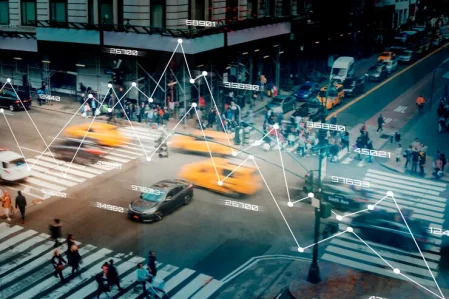
 AI Inventory Management Software
AI Inventory Management Software
 AI Software Development
AI Software Development  AI Development Company
AI Development Company  AI App Development Services
AI App Development Services  ChatGPT integration services
ChatGPT integration services  AI Integration Services
AI Integration Services  Generative AI Development Services
Generative AI Development Services  Natural Language Processing Company
Natural Language Processing Company Machine Learning Development
Machine Learning Development  Machine learning consulting services
Machine learning consulting services  Blockchain Development
Blockchain Development  Blockchain Software Development
Blockchain Software Development  Smart Contract Development Company
Smart Contract Development Company  NFT Marketplace Development Services
NFT Marketplace Development Services  Asset Tokenization Company
Asset Tokenization Company DeFi Wallet Development Company
DeFi Wallet Development Company Mobile App Development
Mobile App Development  IOS App Development
IOS App Development  Android App Development
Android App Development  Cross-Platform App Development
Cross-Platform App Development  Augmented Reality (AR) App Development
Augmented Reality (AR) App Development  Virtual Reality (VR) App Development
Virtual Reality (VR) App Development  Web App Development
Web App Development  SaaS App Development
SaaS App Development Flutter
Flutter  React Native
React Native  Swift (IOS)
Swift (IOS)  Kotlin (Android)
Kotlin (Android)  Mean Stack Development
Mean Stack Development  AngularJS Development
AngularJS Development  MongoDB Development
MongoDB Development  Nodejs Development
Nodejs Development  Database Development
Database Development Ruby on Rails Development
Ruby on Rails Development Expressjs Development
Expressjs Development  Full Stack Development
Full Stack Development  Web Development Services
Web Development Services  Laravel Development
Laravel Development  LAMP Development
LAMP Development  Custom PHP Development
Custom PHP Development  .Net Development
.Net Development  User Experience Design Services
User Experience Design Services  User Interface Design Services
User Interface Design Services  Automated Testing
Automated Testing  Manual Testing
Manual Testing  Digital Marketing Services
Digital Marketing Services 
 Ride-Sharing And Taxi Services
Ride-Sharing And Taxi Services Food Delivery Services
Food Delivery Services Grocery Delivery Services
Grocery Delivery Services Transportation And Logistics
Transportation And Logistics Car Wash App
Car Wash App Home Services App
Home Services App ERP Development Services
ERP Development Services CMS Development Services
CMS Development Services LMS Development
LMS Development CRM Development
CRM Development DevOps Development Services
DevOps Development Services AI Business Solutions
AI Business Solutions AI Cloud Solutions
AI Cloud Solutions AI Chatbot Development
AI Chatbot Development API Development
API Development Blockchain Product Development
Blockchain Product Development Cryptocurrency Wallet Development
Cryptocurrency Wallet Development About Talentelgia
About Talentelgia  Our Team
Our Team  Our Culture
Our Culture 
 Healthcare App Development Services
Healthcare App Development Services Real Estate Web Development Services
Real Estate Web Development Services E-Commerce App Development Services
E-Commerce App Development Services E-Commerce Web Development Services
E-Commerce Web Development Services Blockchain E-commerce
Development Company
Blockchain E-commerce
Development Company Fintech App Development Services
Fintech App Development Services Finance Web Development
Finance Web Development Blockchain Fintech
Development Company
Blockchain Fintech
Development Company E-Learning App Development Services
E-Learning App Development Services Restaurant App Development Company
Restaurant App Development Company Mobile Game Development Company
Mobile Game Development Company Travel App Development Company
Travel App Development Company Automotive Web Design
Automotive Web Design AI Traffic Management System
AI Traffic Management System AI Inventory Management Software
AI Inventory Management Software AI Software Development
AI Software Development AI Development Company
AI Development Company ChatGPT integration services
ChatGPT integration services AI Integration Services
AI Integration Services Machine Learning Development
Machine Learning Development Machine learning consulting services
Machine learning consulting services Blockchain Development
Blockchain Development Blockchain Software Development
Blockchain Software Development Smart contract development company
Smart contract development company NFT marketplace development services
NFT marketplace development services IOS App Development
IOS App Development Android App Development
Android App Development Cross-Platform App Development
Cross-Platform App Development Augmented Reality (AR) App
Development
Augmented Reality (AR) App
Development Virtual Reality (VR) App Development
Virtual Reality (VR) App Development Web App Development
Web App Development Flutter
Flutter React
Native
React
Native Swift
(IOS)
Swift
(IOS) Kotlin (Android)
Kotlin (Android) MEAN Stack Development
MEAN Stack Development AngularJS Development
AngularJS Development MongoDB Development
MongoDB Development Nodejs Development
Nodejs Development Database development services
Database development services Ruby on Rails Development services
Ruby on Rails Development services Expressjs Development
Expressjs Development Full Stack Development
Full Stack Development Web Development Services
Web Development Services Laravel Development
Laravel Development LAMP
Development
LAMP
Development Custom PHP Development
Custom PHP Development User Experience Design Services
User Experience Design Services User Interface Design Services
User Interface Design Services Automated Testing
Automated Testing Manual
Testing
Manual
Testing About Talentelgia
About Talentelgia Our Team
Our Team Our Culture
Our Culture
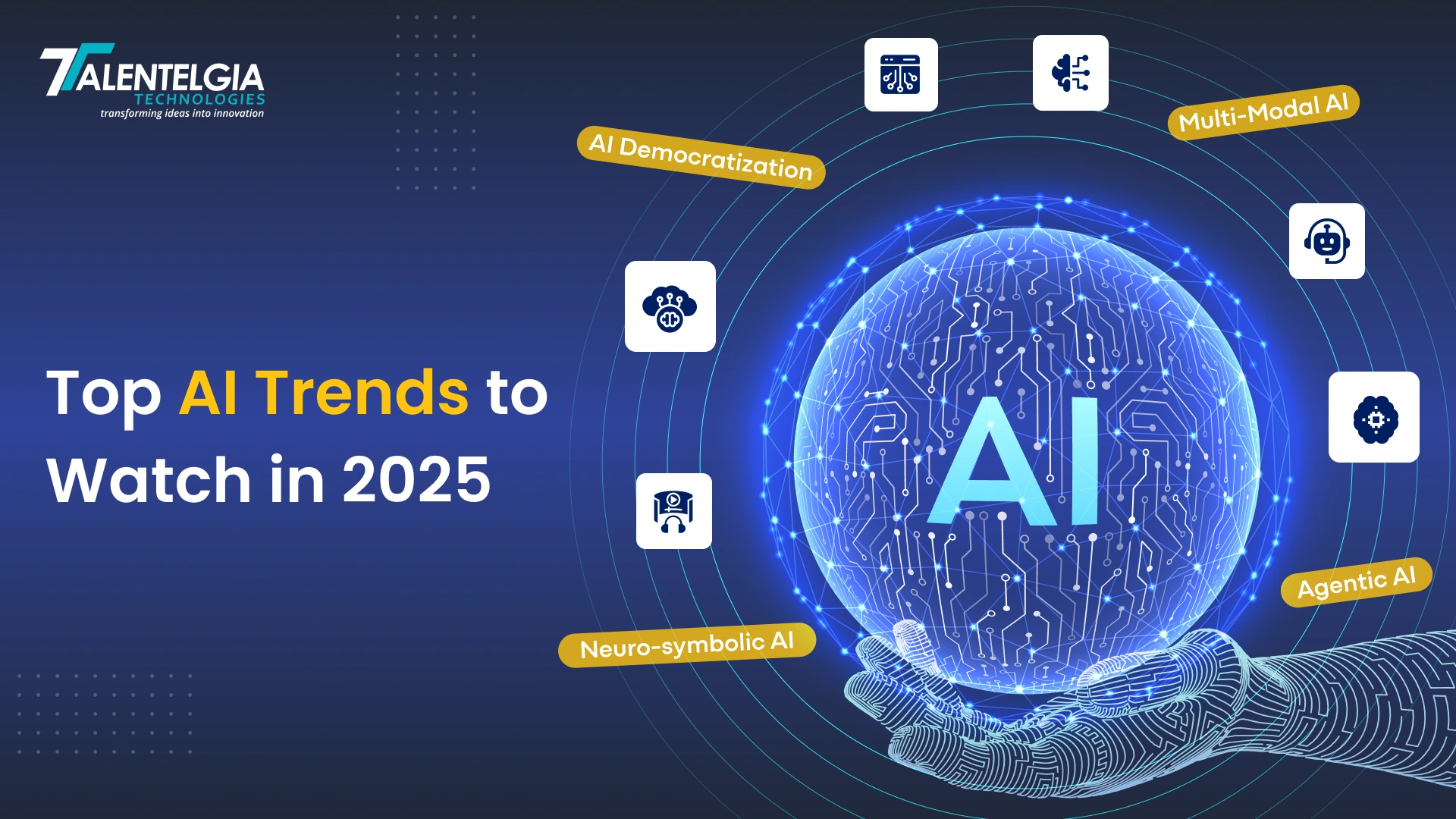
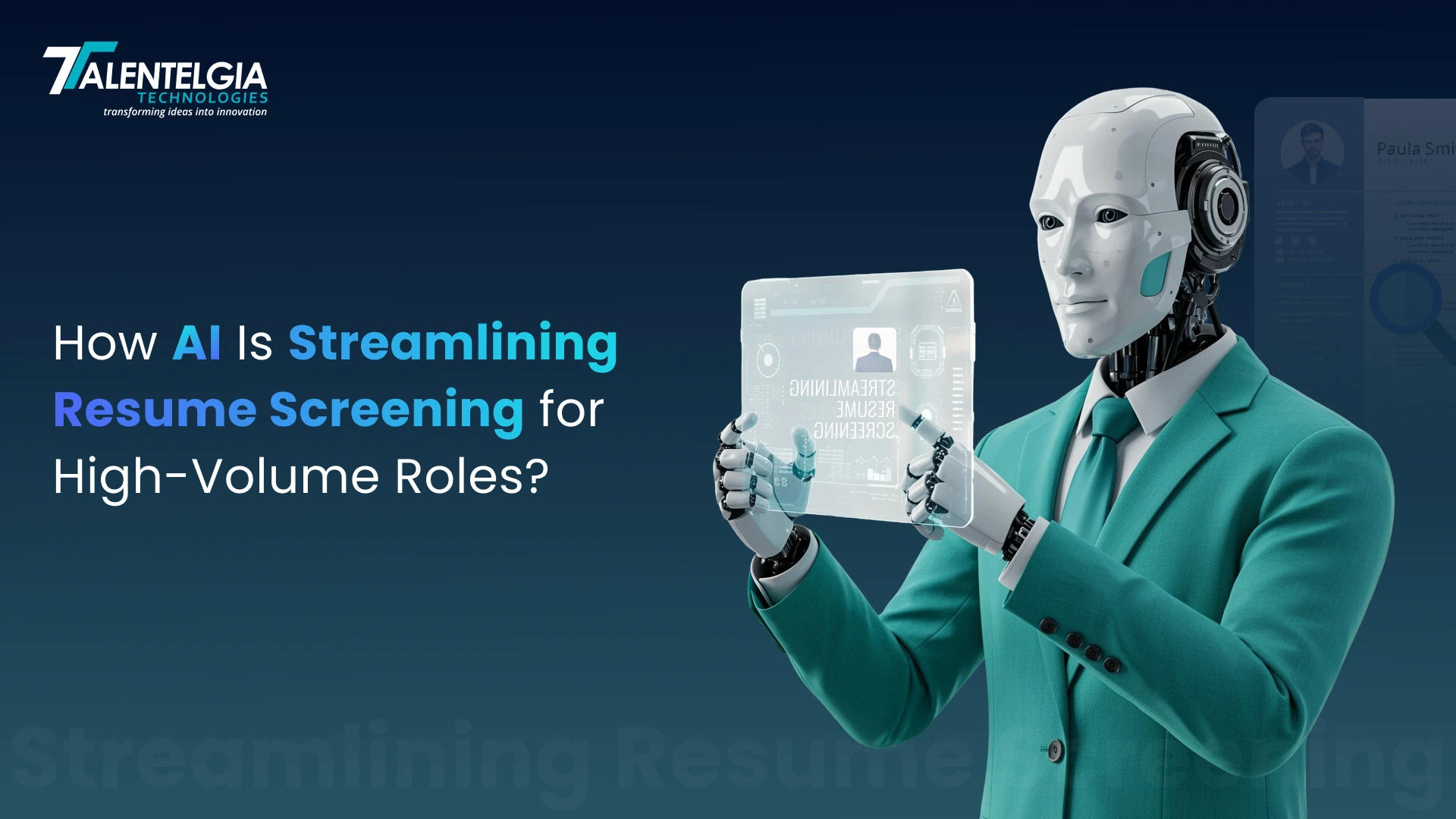

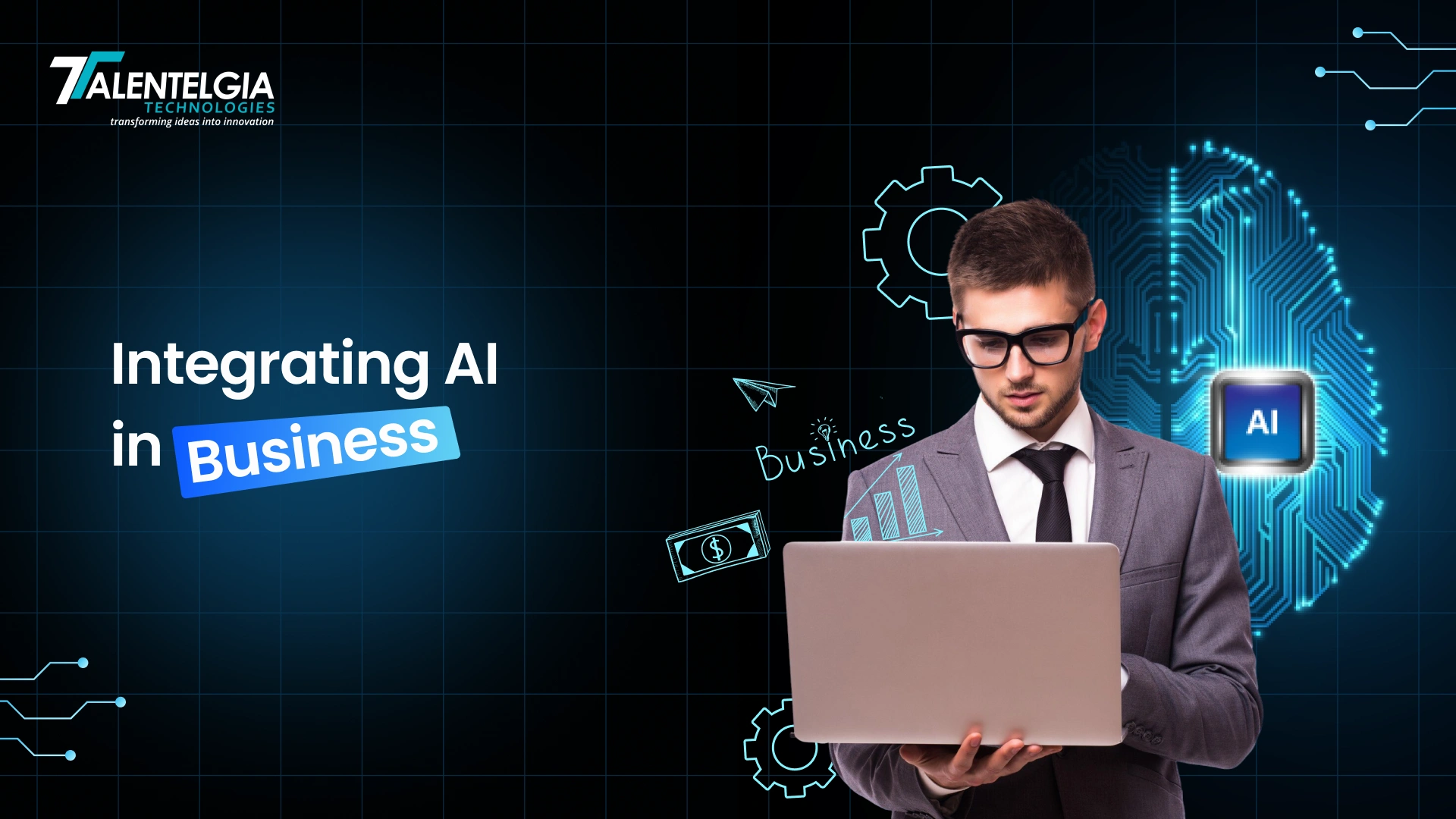













 Write us on:
Write us on:  Business queries:
Business queries:  HR:
HR: 




